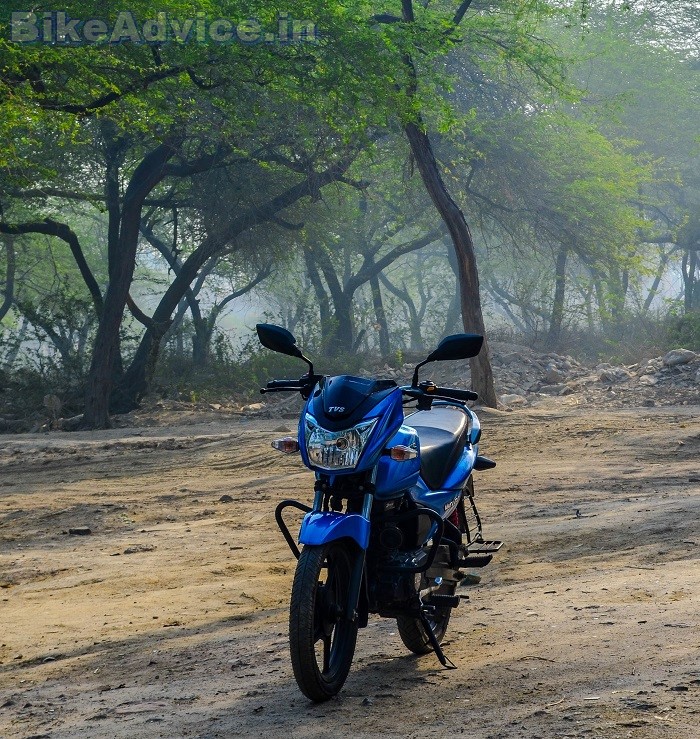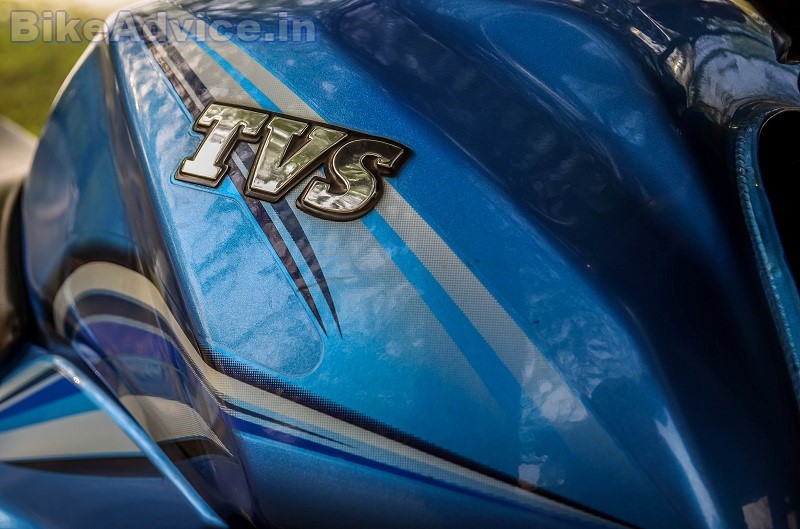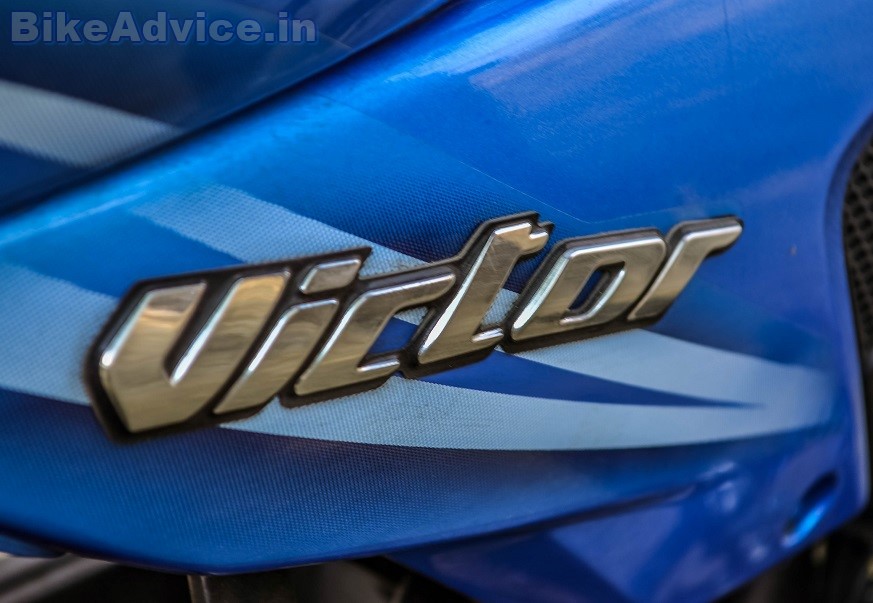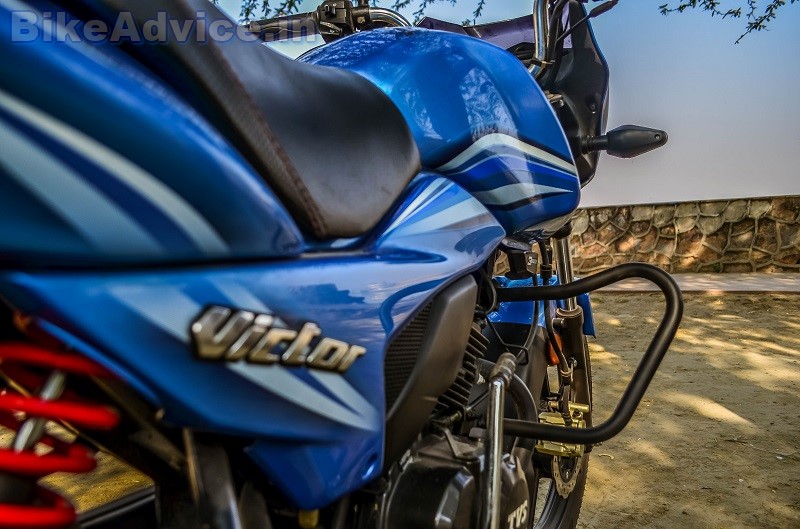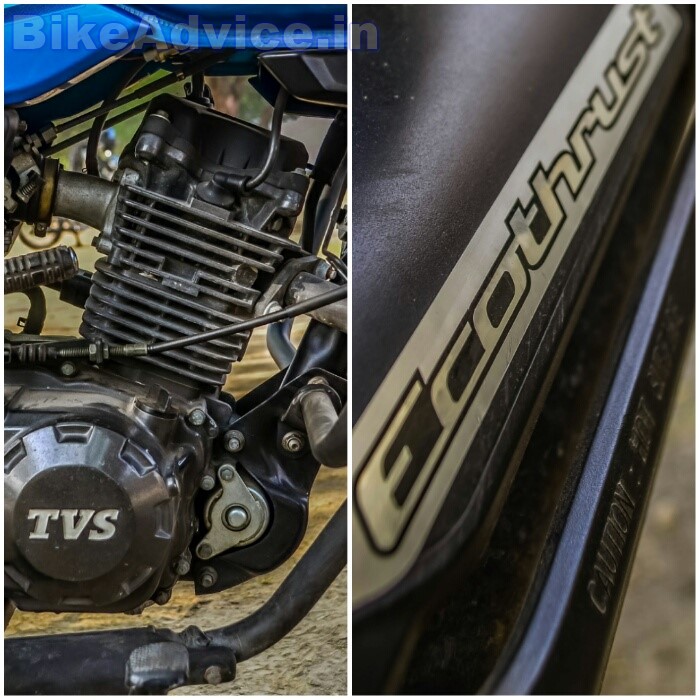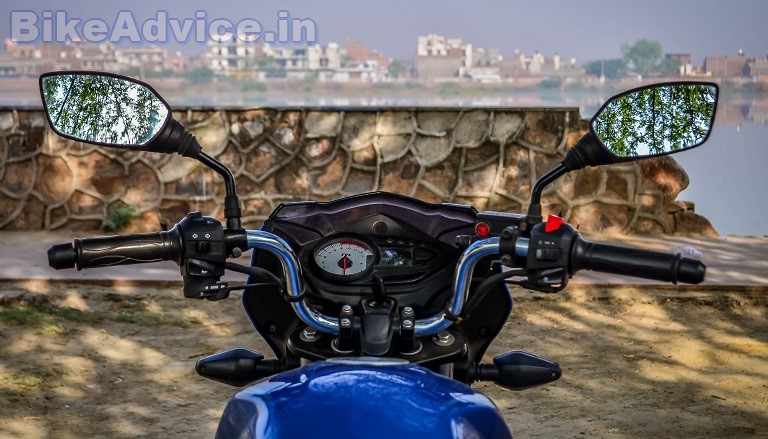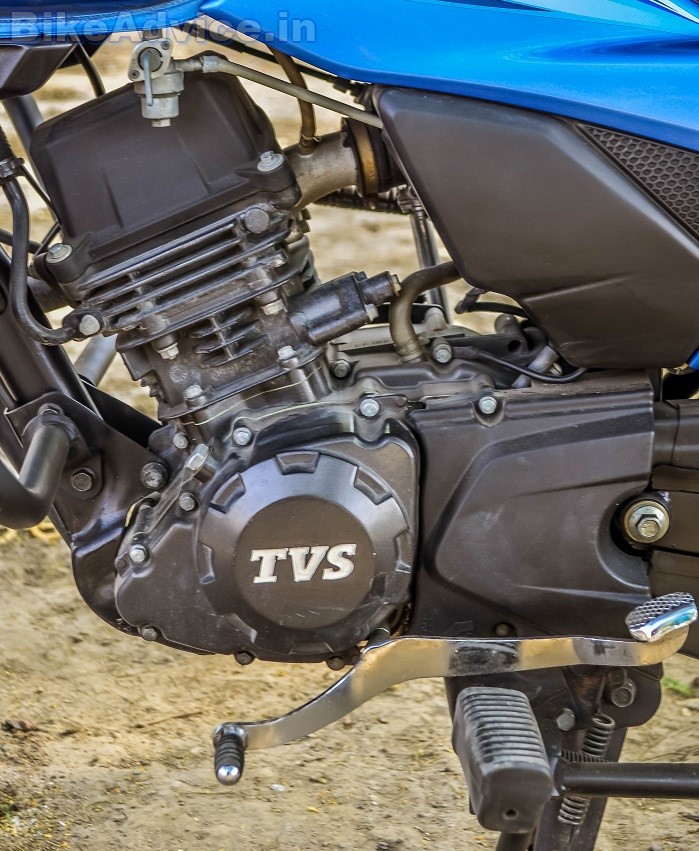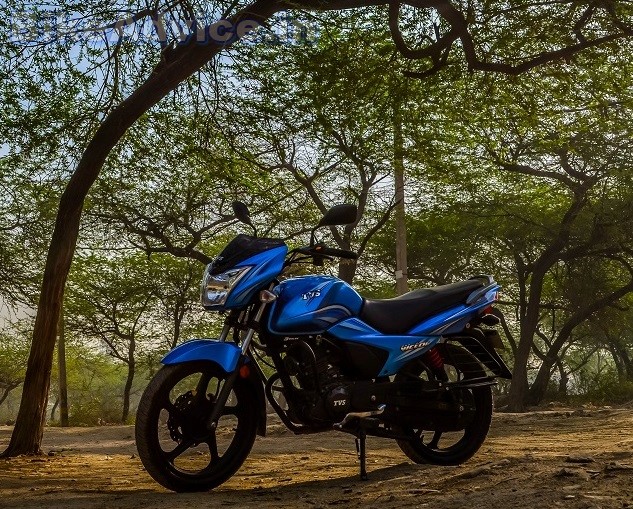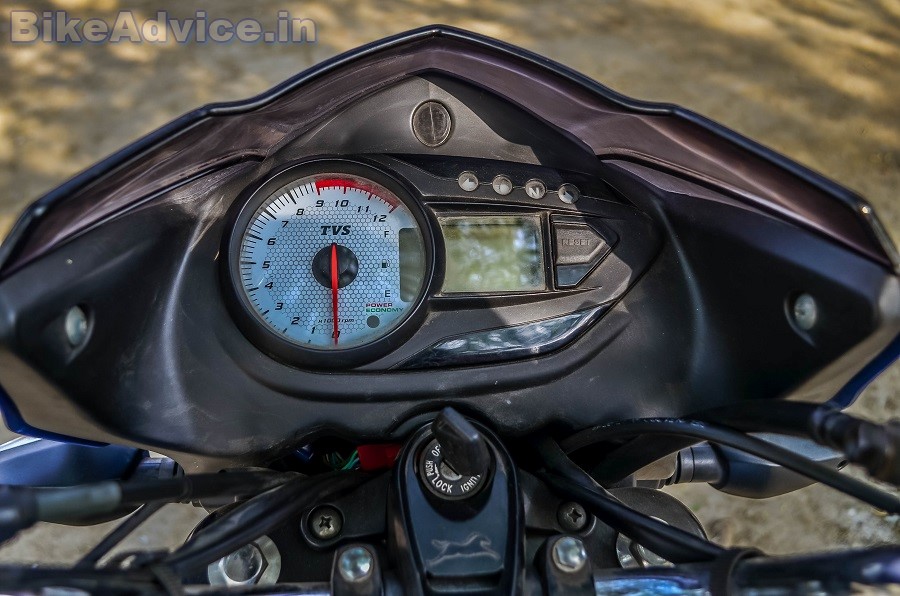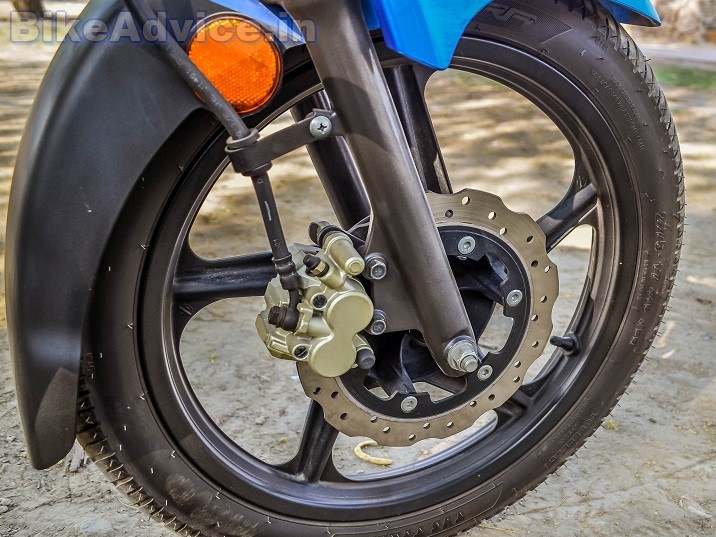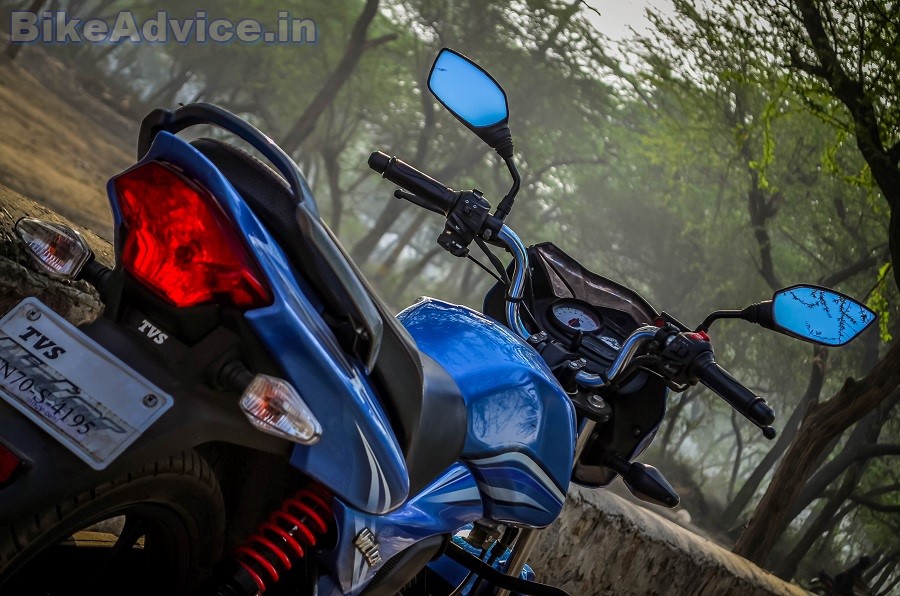Victor Review: Words: Syed Shiraz | Photography: Prashant Singh
Borrowing motorcycles from friends is something that all of us have done at some point or the other. One such time for me was around 13 years ago, when I used to own just one motorcycle and a car, and Murphy’s Law had ensured that I could not use either to drop the then-apple-of-my-eye to her hometown, some 66 km from Delhi, the next day. Two considerate friends, who could not see their best buddy go single again, offered their motorcycles for my first chivalrous expedition. The bikes were: a Hero Honda Karizma, and a Hero Honda Passion. No prizes for guessing which one I chose. In fact, upon seeing the 223 cc bike parked outside my house, I had immediately proceeded to return the commuter to my friend while simultaneously praying to God to keep such underpowered mofas away from me all my life.
Karma, as they say, is a female canine. While coming back from work the next day on the Karizma, I encountered the thickest traffic jam of my life. But, it was one where there were a few bikes that could still take advantage of the minutest gaps – yes, you guessed it right – the TVS Star Citys, Victors, HH Splendors, Passions, Bajaj Platinas, etc., of the world. I must confess that I envied them at that moment. Fast forward to the present day where the traffic has become ten times worse, and where the thought of buying the lightest motorcycle for my Monday-to-Friday commute is getting more recurrent by the day. So, this TVS Victor review should not only be read from the perspective of the typical commuter demographic.
You might find this review useful even if you drive a car, and hate bikes, but are getting sick of wasting four to five hours daily in commuting to work and back. You may also forward this review to someone who you think is in the market for a ‘light’, easy to ride, fuel-efficient motorcycle, and also to those who can’t think beyond the Heros and Hondas when it comes to ‘fuel-efficient’ motorcycles.
TVS Victor Review – Design, Instrumentation, and Ergonomics
It’s the design of most commuter bikes that always made me look at them with sheer disgust. Of course, I never expected a mini Panigale, but a manufacturer can at least try to get the colours and stickers right. I mean, how on earth can your design guys splash colours on a motorcycle like they were playing Holi with their life partners? Thankfully, unlike Hero MotoCorp, TVS have resisted that urge. So while the colours and graphics on the Passions and Glamours look like cheap bridal make-up, that too done in a jiffy, TVS have got the decals and shades just right on the Victor (in fact, their RTR 200 is the best in business in this department).
But what they haven’t got right are the names of the colours. I mean, what do they imply by Generous Grey or Restful Red? They could have gone with Gregarious Grey (though it would have been an oxymoron) and Lustful Red, but it’s okay, because, Blissful Blue, the colour of our test unit, still makes some sense. There are three more shades, which you may check on their website. But it’s not just TVS; Honda think that their Livo looks amazing in white so guess what they call that shade? Pearl Amazing White, no less! Hero MotorCorp on the other hand are just too embarrassed, or perhaps clueless about their choices, so they have not named the colours. Good job there, Hero. Now since I have digressed already, let me quickly also add that if it came down to choosing a commuter bike only for its colour, I would take the Honda Livo without a second thought. The choices in the second row will be the TVS Victor, Yamaha Saluto, and Suzuki Hayate. The third row would house the Bajaj Platina and Mahindra Centuro, whereas I’ll just a buy a Hero Passion XPRO if I want to lead a remorseful life.
Anyway, coming back to the design of the TVS Victor, it has ‘premium’ written all over it. Be it the lustre of the aforementioned colour, or the look of the decals, everything feels rich without appearing gaudy. In fact, the whole fit and finish is quite impressive, and there is a tough, built-to-last feel in all controls and panels.
Talking about switchgear and instrumentation, the TVS Victor gets an analogue tachometer (a rare sight in this segment); a digital, bar-type, fuel gauge; a digital speedo, and two trip meters. The choke is on the handlebar, and what would appear to you as the engine kill switch is actually the hazard-flasher (all four indicators blinking at the same time). Oh, there’s a headlight flasher (pass switch), and pilot lamps as well.
And that headlight has to be the biggest in the segment. It sure is the brightest of them all! TVS have even mentioned that on their site.
The seat is again something which is the best in segment! TVS understand that these bikes will see a lot of mileage, so comfort is paramount. Therefore, they have put a fantastic saddle on this motorcycle. And while the rider’s perch is as comfortable as it can get, it’s the pillion section that is in a different league altogether. I reckon derrieres of all shapes and sizes to be ultra-comfortable on this one. TVS perhaps also identified that these bikes will see a lot of saree-clad pillions, who would sit sideways (with both their feet on one side) so they thoughtfully integrated a broad footrest in the sareeguard for them (it’s not a novelty though as every commuter motorcycle comes with it). The grabrail is a nice chunky unit as well.
If you are someone who wants to invest in a fleet of motorcycle taxis, this is the bike to buy – your customers will love the wide and comfortable seat on the Victor. Those with a fine eye will appreciate the red stitching on it too. That red is also complemented by the shocks’ springs finished in the same hue.
Now, TVS do not mention the seat height (I couldn’t see it on their website; let me know if you can!), but I could feel it to be a wee bit on the higher side (795-800 mm?). So it might be a stretch for anyone shorter than 5’ 2”. Still, take a test ride and check it out for yourself as your inside leg seam might tell a different story.
Now I have always maintained that a motorcycle, especially a commuter, should be as light as possible, but it should ‘look’ heavy. One of my uncles, who is quite well-built and tall, had bought a Bajaj Platina a couple of years ago, and I can still recall the reaction of his 14-year old daughter. She’d said, “it looks malnourished”. I can guarantee that nothing of that sort will ever happen with the Victor, as it looks quite substantial for the class. The big exhaust helps.
The new Victor actually reminds me of the stout, yet sharp, Victor Edge. No, not the first Victor GL/GLX, but the Victor Edge (produced between 2005-2007, if I am not wrong) with a 17-inch front alloy and an 18-inch rear. The new Victor’s handling reminded me more of it, but more on that a little later.
TVS Victor Review – Performance, handling, and ride quality
The Victor comes with a 110 cc, three-valve engine which TVS refer to as “EcoThrust”. I presume it means economy and thrust or, in other words, good fuel-efficiency and power output. Or, having your cake and eating it too.
Let me first tell you about the thrust because, as far as horsepower battles go, the TVS Victor is the most powerful bike in the segment! It produces 9.5 horsepower at 7,500 rpm, which is not only better than all the 100-110 cc bikes’ but also than some of the 125s’! For example, the 125 cc Super Splendor produces 0.5 hp less than the Victor! The Victor’s engine also boasts of the best torque figure in the segment – 9.4 Nm at 6,000 rpm.
All those numbers mean that, in the company of Splendors, Passions, et al, you will be the first one off the lights, and will manage to clock a higher top speed as well. I didn’t capture the zero to sixty runs as I know that while it may interest you as a reader, the intended buyer would never rip the bike like that. Neither would he hang on to the bike at triple-digit speeds. But so you know, I did see 105 km/h on the speedo once. And I could frustrate a lot of 125s, and even a few 150s, in the standing start sprints, on my daily commute to office.
Again, the prospective owners are not interested in all that. They want to know if the motorcycle works smoothly day in and day out between 40-60 km/h; whether it requires a lot of downshifts if the speeds drop below that mark; whether it can climb flyovers easily with a 100 kg rider and with the pillion balancing a double-door fridge on his lap? I am happy to report that the Victor checks all these boxes and more! I couldn’t arrange a fridge though. But Prashant, our photographer for the day, is a philanthropist, and also a powerlifter (the astrologer told him to choose any profession he likes as long as it makes for a good alliteration with his name; nowadays he is negotiating with a pub to change the designation to Pouncer or Pounder, from Bouncer, before he accepts their offer letter. They are a little scared…) and weighs 20 kilos more than the bike. Sitting pillion with him, on an incline, gave me a good idea about the pulling power of that little EcoThrust engine – it just climbed that incline as if it were a 4×4 in its past life.
But I hate the all-up gear pattern of all commuters and the Victor is no exception. It is high time that all manufacturers adopt the one-down-rest-up format, irrespective of the cubic capacity of the motorcycle. Because it does not matter which bike it is, you hammer down the gearbox to put it in the first cog, and NOT in neutral. But you get the latter eight out of ten times in an all-up gearbox, which might compromise the rider’s safety as well. So next time you see a commuter suddenly losing momentum in crawling traffic, please be a little patient in allowing him to use his heel on the heel-and-toe shifter to select the primary cog.
I thought that buyers in this segment would be very keen to know about the vibrations so I tested that as well thoroughly. Heck, like a typical commuter user, I even removed my gloves to have a better, er, skin to rubber feel. And while doing that I realized that, unlike some commuters’, the grips on the Victor would not give you blisters. But wearing gloves further minimises the possibility. So wear them. Anyway, I noticed that you could ride the Victor all day at 60 km/h and there are zero vibrations up until this point. At 70 km/h, you do feel a faint sensation through the pegs, but still nothing through the handlebar. From 80 km/h onwards the vibes do come in noticeably but they still never get on to your nerves at any point in time. Most users will never breach that threshold. More so, because there is a light in the dash that alerts you with a “cops with speed guns ahead” warning flash.
Okay, I did make that up, obviously, but there is indeed a light that helps you in keeping a check on your right wrist. It’s the power/economy mode light, in the tachometer, that glows green when you are riding calmly, but changes to red when you cross 4900 rpm in top gear, or are redlining it in every gear.
But, the best part is that the Victor does not mind getting the latter kind of treatment! It loves being ridden hard (well, as hard as a commuter can be ridden) and its chassis is its motor’s partner in crime. At 113 kg (112 kg for the drum brake version) it’s a light bike and it feels even lighter on the move. The turn-ins are super quick and it is this trait that reminded me of the Victor Edge, which I talked about earlier in this review. Like the Edge, the new Victor also changes direction the moment you think about it, which allowed me to slice through the narrowest gaps in rush hour traffic.
I got home and checked the TVS website to find out if the Victor has a shorter wheelbase than the other bikes’ in the segment, and I was right – in fact, the Victor does have one of the shortest wheelbases in the segment! See, a five mm difference in wheelbase makes zilch difference to the seat length (if you’re concerned) in motorcycles, but the handling is impacted. The shorter the wheelbase, the more agile a bike will be. And so is the Victor. Now if you’re thinking that if it is so lively in the city, its stability on highways might be compromised, right? Wrong! I told you that I did see more than a hundred kays on the speedo once, and let me also add that I was maintaining 70-90 km/h throughout on that particular day. But never did I feel that the crosswinds will dispatch me on to the wing mirror of the car next to me or anything of that sort.
The ride quality of the Victor is supple, but, thankfully, the suspension never feels gooey like is the norm with most commuters. You can blast through the broken sections at full chat and the bike would not throw you off. The ground clearance, at 175 mm, also helps, and is among the best in segment again. Confession: My daily commute is between 60-65 km, and I was liking the bike so much that I postponed taking delivery of a big bike to a later date, much to the surprise of that manufacturer’s PR.
I was also liking the bike due to the fact that it has got a fantastic front brake! It is so good that I don’t even recollect how the rear one was! And this is not a sportbike I am talking about; it’s a darn commuter where there is not much weight on its front wheel! I have said this earlier, and I will say it again – the brakes of your motorcycle are as good or as bad as the grip provided by your tires. And while most of us auto journalists and bloggers would tell you to have Metzelers even on your scale models, let me tell you that the grip on offer here far exceeds the purview of the intended customer, period.
TVS Victor Review – Fuel Efficiency
And now comes the most important part of this review – fuel efficiency. TVS claim 76 km/l and now it’s common knowledge that you would never achieve the figure claimed by a company, unless you are preparing for an entry in the Limca Book of Records. That said, despite commuting daily in rush hour traffic the bike returned between 55-62 km/l consistently, which is phenomenal for what is the most powerful motorcycle in the segment. By the way, that’s 55 km/l in week one when I was gunning it at every opportunity, and 62 km/l in week two when my conscience told me to take it easy on a commuter motorcycle. More careful riders should be able to stretch a litre to around 65-66 km/l.
Which means that, with its eight-litre tank, you should be able to cover 500 km in 500 rupees at the current price (Rs. 65.32 per litre) of petrol in Delhi. McLeod Ganj in Himachal Pradesh is 477 km from Delhi. And Google tells me that bus fares start at Rs. 699. Just saying.
You still need a verdict? Okay, you just want me to again reiterate the reasons for you to choose the TVS Victor over the Heros. Well, one would buy the Victor simply because it not only matches them in the most important fuel-efficiency department, but also betters them in every other area, including the price – at INR 54,015, this top variant of the TVS Victor is around four thousand rupees cheaper than the top-end Passion XPRO.
So not only will you be saving a lot of money that can get you a pair of good quality gloves, and enough fuel to facilitate daily dates with the girlfriend, you’ll be able to be reach her house quicker on the Victor than that pizza delivery guy on his CD100. Do it; you got to keep her away from those guys.
Next Read: TVS Apache RTR 200 Review – Apache Indian | Read All Reviews

